The Twelve-Factor App Guide: What DevOps and Ops Engineers Need to Know
 Rushikesh Kamble
Rushikesh Kamble
In today's rapidly evolving tech landscape, the need for scalable, maintainable, and resilient applications is more critical than ever. The Twelve-Factor App methodology offers a set of best practices that address these needs, making it an invaluable guide for DevOps and Ops engineers. This blog explores what the Twelve-Factor App is, why it is essential, and how it can transform your development and operations processes.
What is the Twelve-Factor App?
The Twelve-Factor App is a method for building software-as-a-service applications that are portable, scalable, and maintainable. Created by developers at Heroku, it has become a widely accepted standard for modern application development, outlining twelve principles that offer a complete framework for app development, deployment, and management.
Why is the Twelve-Factor App Important ?
The Twelve-Factor App is a set of principles that helps developers build software that is easy to maintain, scalable, and reliable. By following these principles, teams can create apps that can be deployed quickly and easily, regardless of the platform or environment, leading to faster development, less downtime, and a better overall user experience.
Simplified Development and Deployment: Following these twelve principles makes the development and deployment process faster and more efficient.
Scalability: Apps built with the Twelve-Factor methodology can easily handle increased loads and scale up as needed.
Maintainability: The principles promote clean, organized code that is easier to maintain and update.
Portability: Twelve-Factor apps can run on any platform, making them easy to deploy across different environments.
Resilience: These practices help create systems that can quickly recover from failures, ensuring minimal downtime.
The Twelve Factors
1. Codebase
One codebase tracked in version control, many deployments.
Use a single codebase for your app, shared across all environments to maintain consistency.
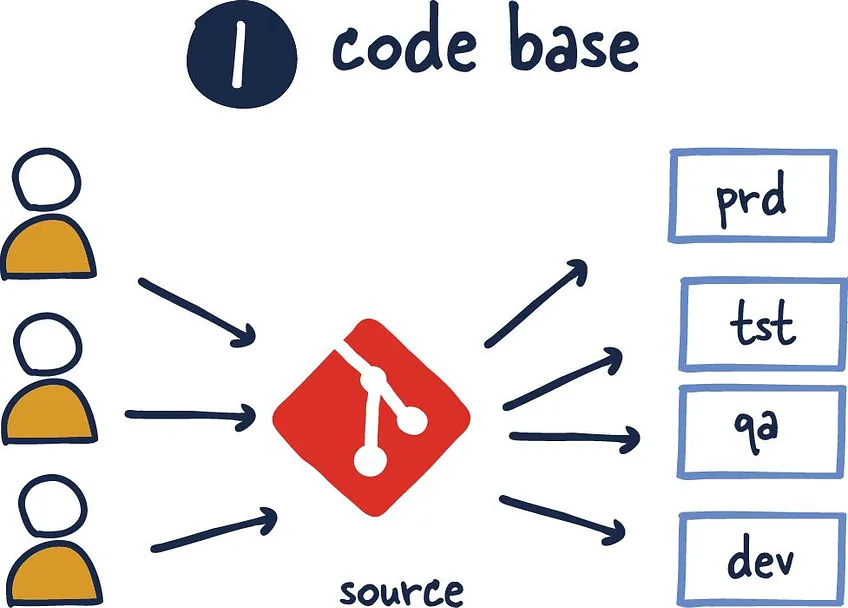
2. Dependencies
Explicitly declare and isolate dependencies.
- Use tools to manage dependencies, ensuring they don't conflict with system-wide libraries.

3. Config
Store configuration in the environment.
Keep configuration separate from code to allow changes without altering the codebase.
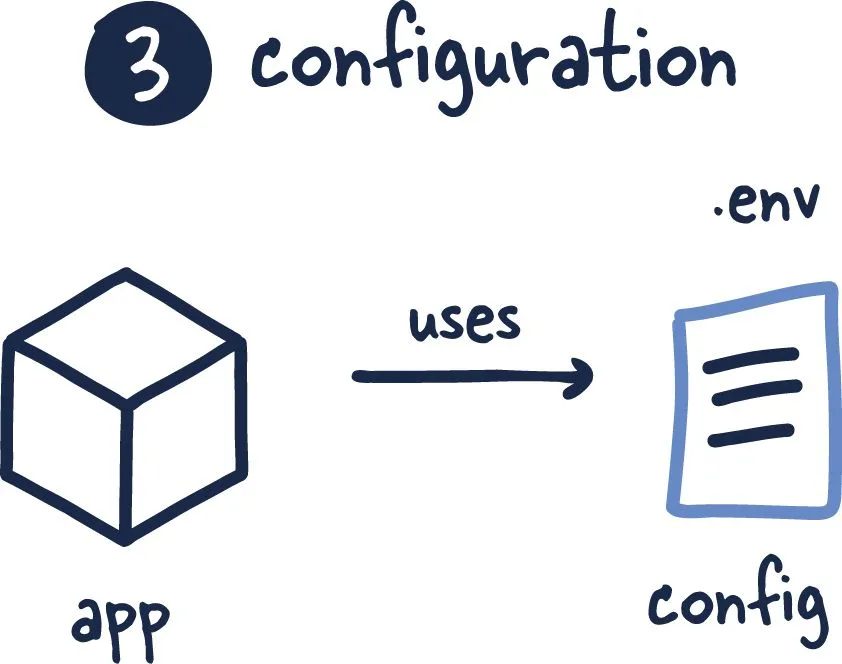
4. Backing Services
Treat backing services as attached resources.
Make services like databases and message queues easily replaceable without code changes.
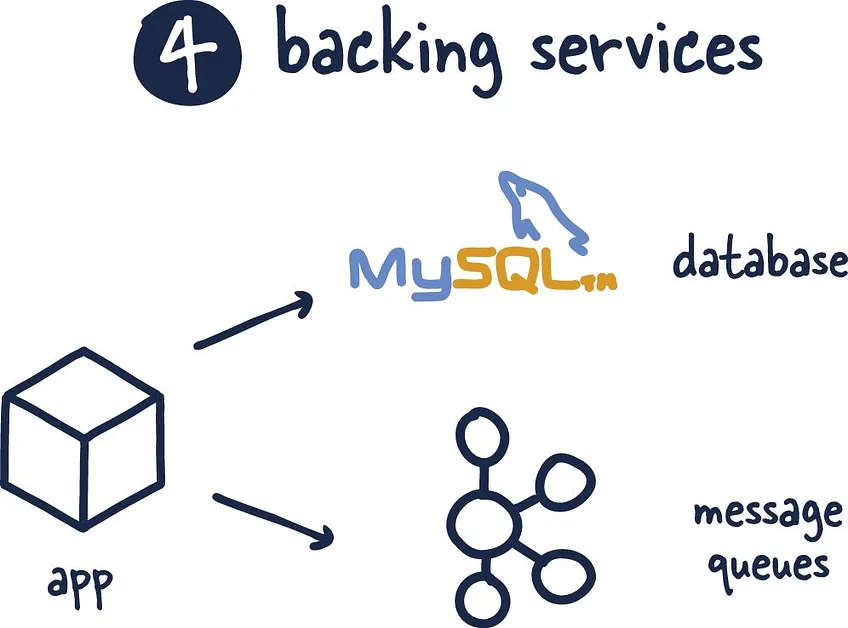
5. Build, Release, Run
Strictly separate build and run stages.
Keep the build (compilation), release (versioning), and run (execution) stages distinct.
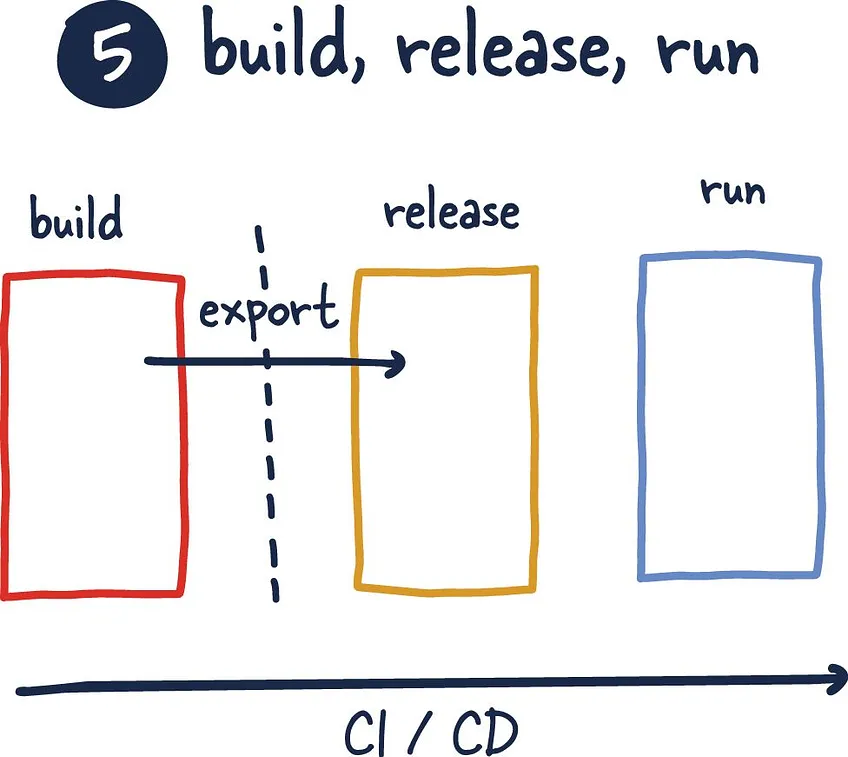
6. Processes
Execute the app as one or more stateless processes.
Design apps to be stateless and share-nothing, improving scalability and reliability.
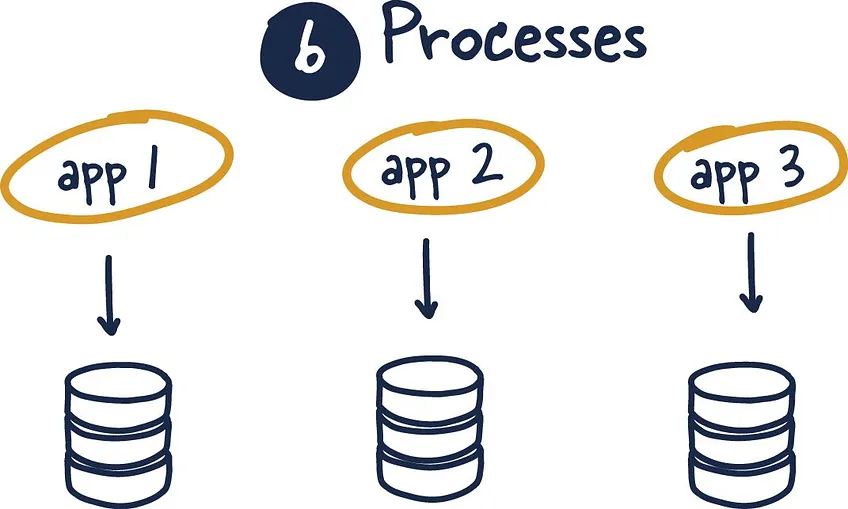
7. Port Binding
Export services via port binding.
Make the app self-contained by exposing services through a port, allowing independent deployment.
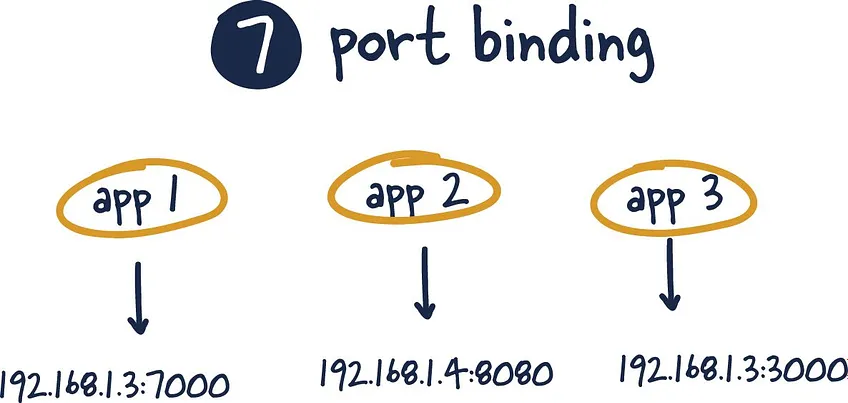
8. Concurrency
Scale out via the process model.
Use process types to handle different workloads, enabling horizontal scaling.
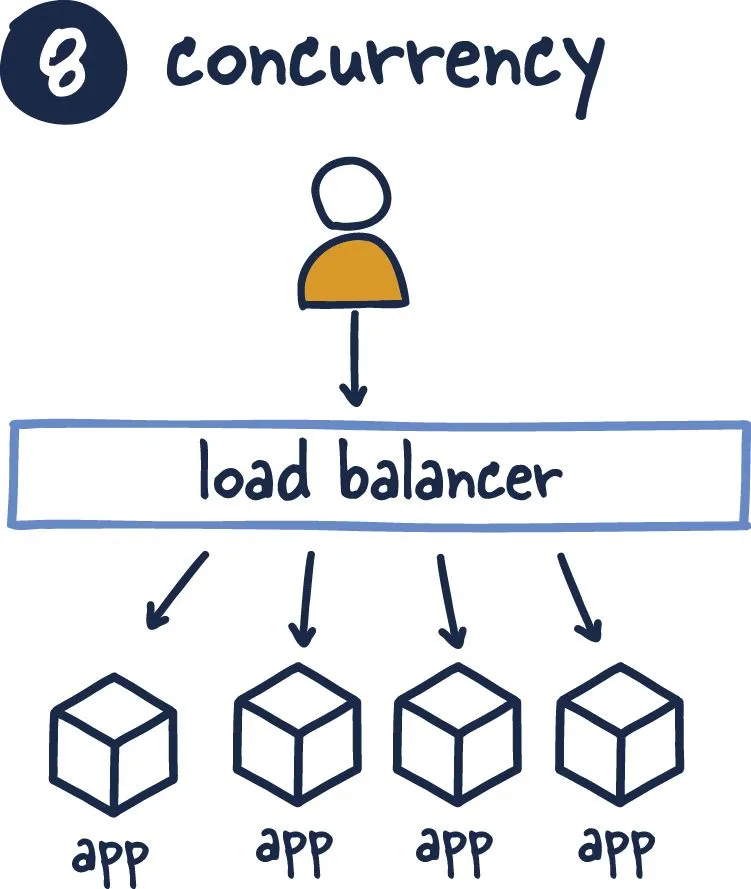
9. Disposability
Maximize robustness with fast startup and graceful shutdown.
Ensure processes can start and stop quickly, improving resilience.
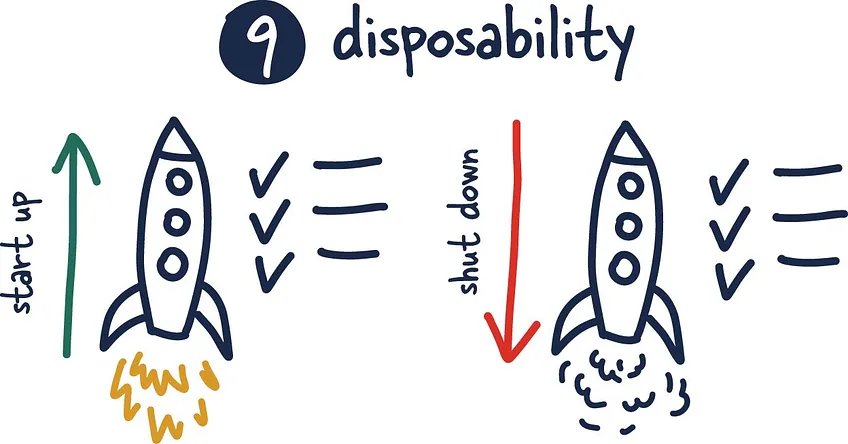
10. Dev/Prod Parity
Keep development, staging, and production as similar as possible.
Reduce differences between environments to prevent deployment issues.
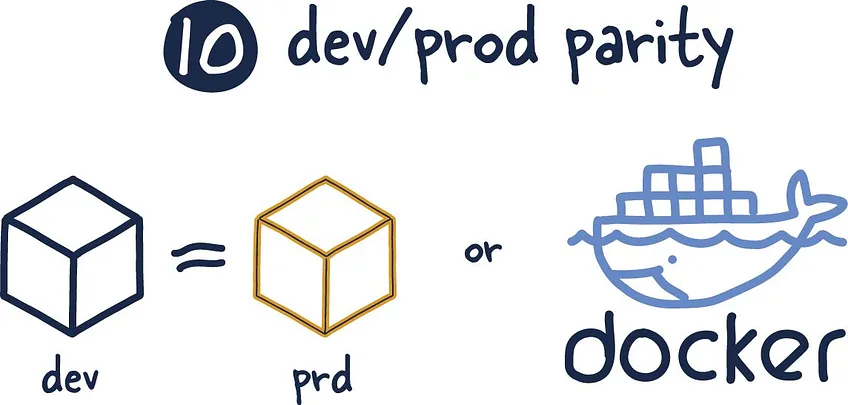
11. Logs
Treat logs as event streams.
Send logs to a centralized location for analysis and monitoring.
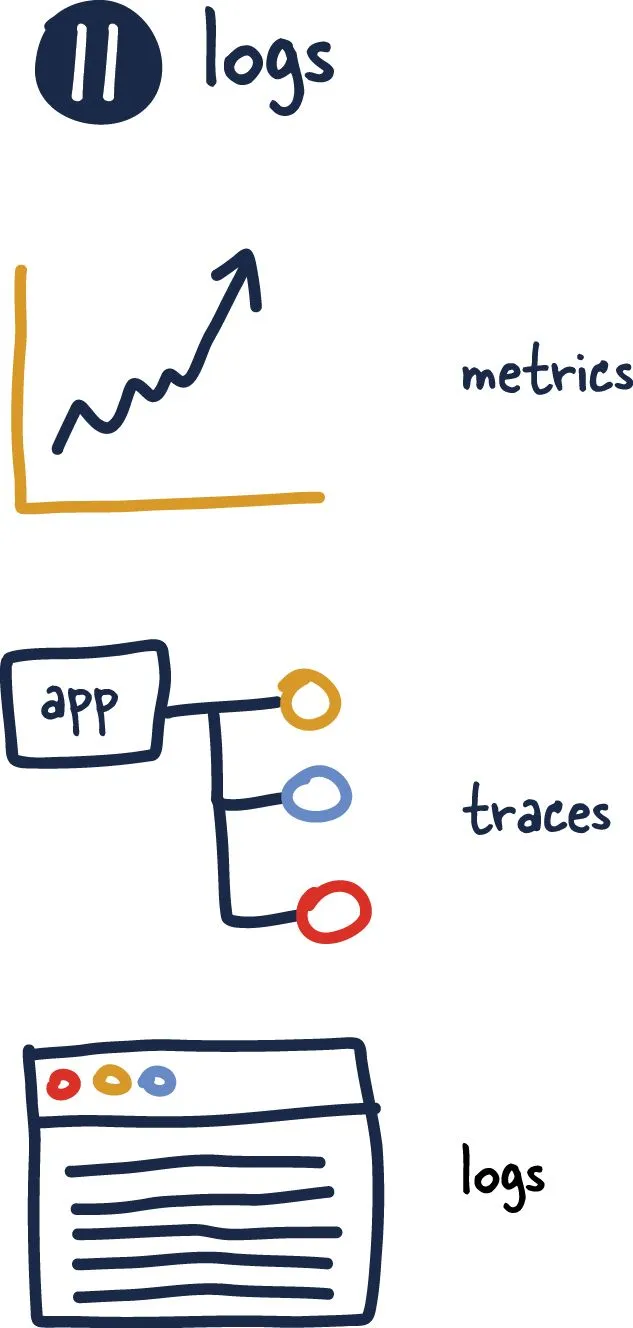
12. Admin Processes
Run admin/management tasks as one-off processes.
Handle administrative tasks (like database migrations) with the same tools as app processes.
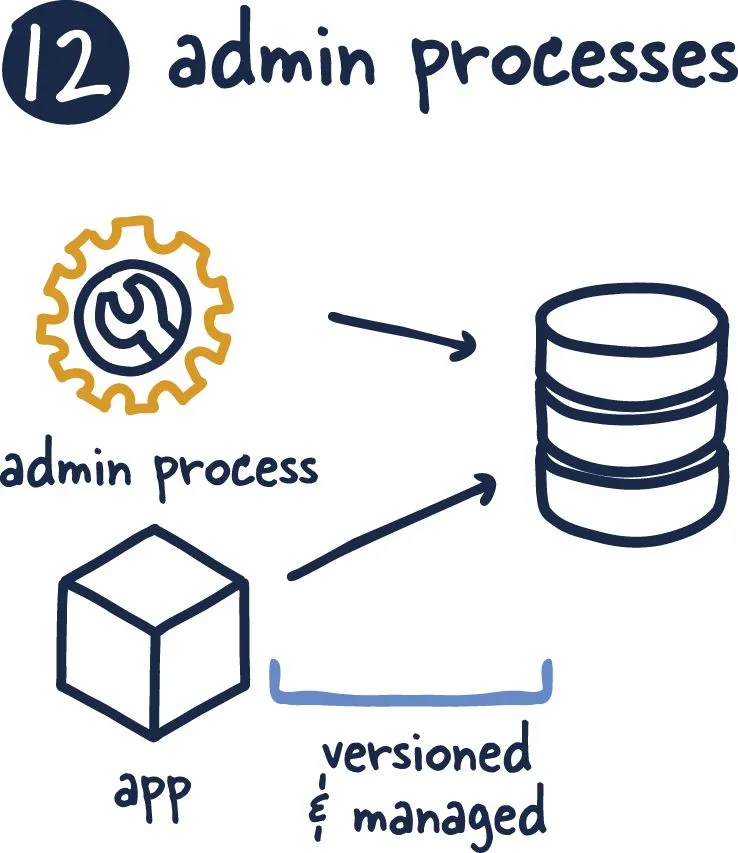
The following image shows the 12 Factor App flow:-
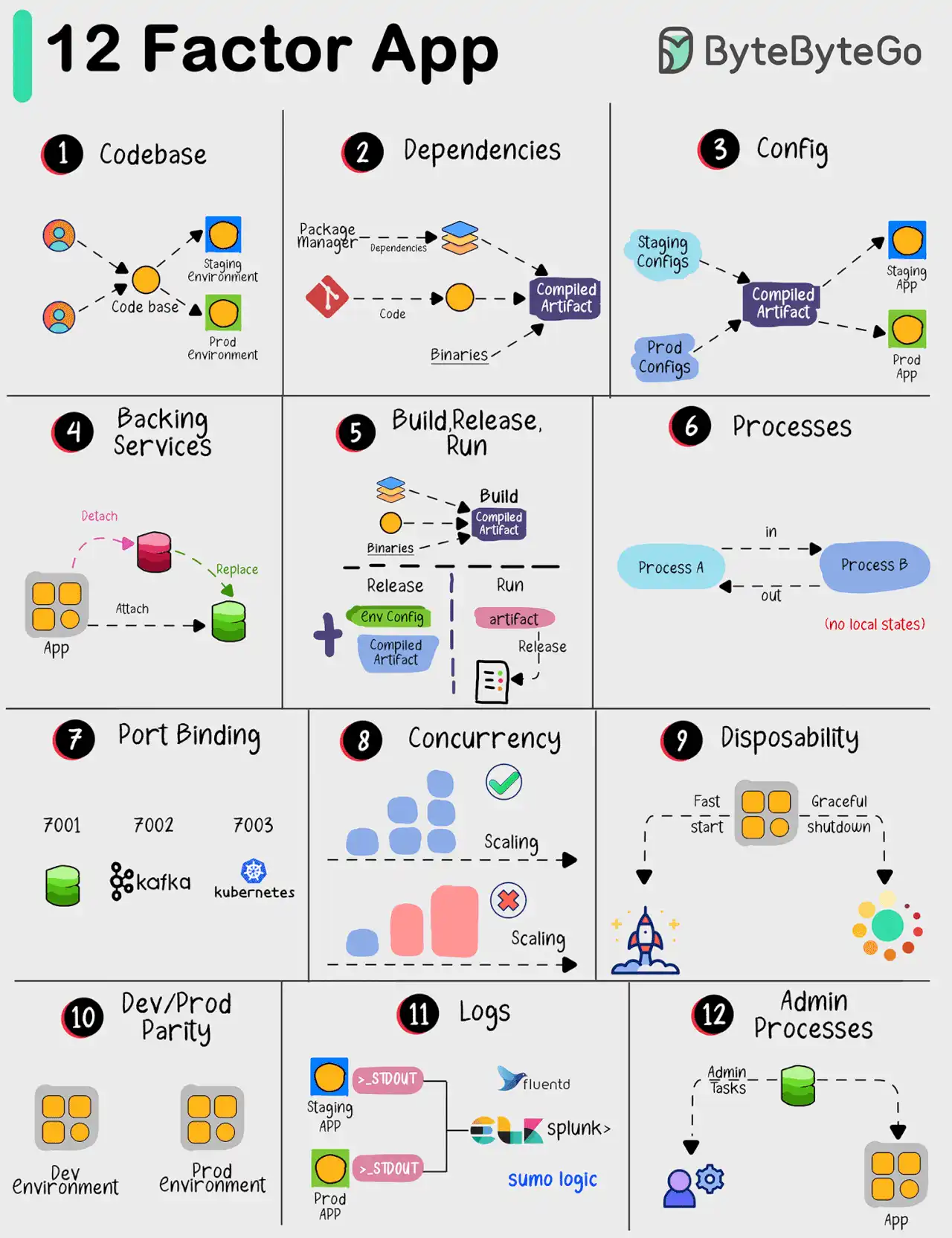
Example: Deploying a Simple Web Application
Let's look at a simple web app built with Python and Flask. By following the Twelve-Factor App methodology, we can ensure it is scalable, maintainable, and resilient.
Codebase: Use Git for version control, maintaining a single repository for the app.
Dependencies: List all dependencies in a
requirements.txtfile and use a virtual environment.Config: Store configuration settings (like database URLs) in environment variables.
Backing Services: Use a service like Heroku Postgres for the database, which can be easily replaced.
Build, Release, Run: Separate the build process (installing dependencies), release process (versioning), and run process (executing the app).
Processes: Ensure the Flask app is stateless and can run as multiple instances.
Port Binding: The app runs on a specified port and can be accessed via that port.
Concurrency: Use multiple worker processes to handle incoming requests.
Disposability: Ensure the app can start and stop quickly without data loss.
Dev/Prod Parity: Keep the development environment as similar as possible to the production environment.
Logs: Send logs to a central logging service .
Admin Processes: Run database migrations using a tool like Flask-Migrate as one-off tasks.
By following these principles, the web application will be easier to develop, deploy, and scale, ensuring it can handle increased traffic and adapt to changing requirements.
Conclusion
The Twelve-Factor App methodology provides best practices for building modern cloud-native applications, ensuring scalability, portability, and maintainability. By following these principles, developers can overcome traditional development challenges and create flexible applications that adapt to different environments. This approach enables rapid iteration, horizontal scaling, and cleaner codebases, making it ideal for cloud-native software-as-a-service applications.
Certification:-
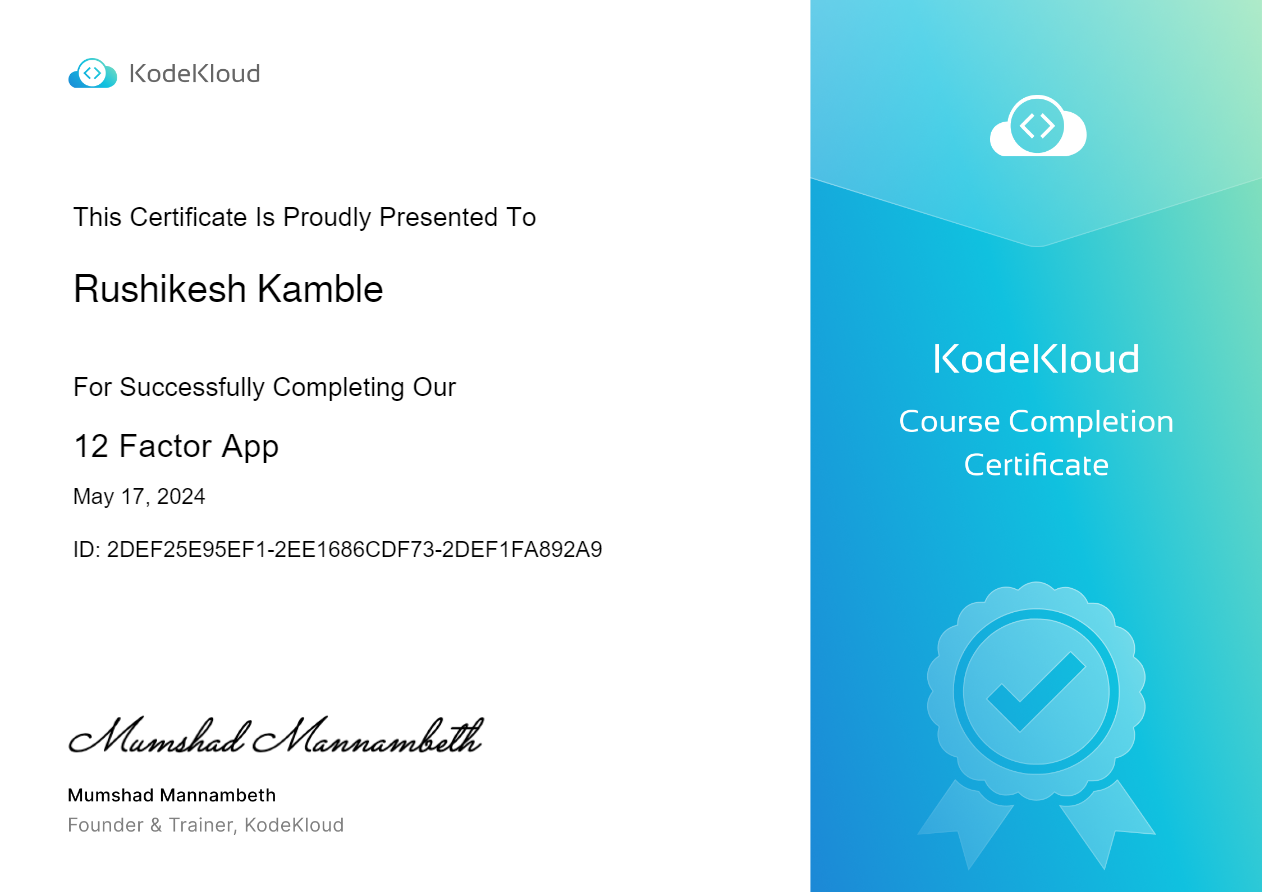
Reference :-
Subscribe to my newsletter
Read articles from Rushikesh Kamble directly inside your inbox. Subscribe to the newsletter, and don't miss out.
Written by
Rushikesh Kamble
Rushikesh Kamble
Hi! I’m Rushikesh, a recent Master's graduate in Computer Applications with a strong foundation in DevOps principles and cloud-native technologies. My journey began with a deep dive into tools like Docker, Kubernetes, GitLab, Jenkins, and Linux, where I gained hands-on experience during my internship at ProLeap Academy. I’m an active participant in CNCF meetups and have a keen interest in exploring the world of AI/ML, specifically AI/ML Operations (AIOps/ MLOps). My goal is to leverage cutting-edge technologies to drive innovation and contribute to the open-source community. Here on Hashnode, I share my thoughts on DevOps, Kubernetes, cloud-native tools, and my journey to explore the intersection of AI and technology. I also love writing about learning experiences, new trends, and challenges faced in the tech world. Let’s connect and learn together!